Debra L. Martin's Blog, page 303
June 18, 2012
Grammar Girl: How to Write Numbers

The reason people get confused about how to write numbers is that different style guides make different recommendations, so it’s easy to hear different rules from different people.
In general, the Chicago Manual of Style wants you to write out the words for more numbers than other style guides. For example, the Associated Press and the British newspaper the Guardian both recommend that their writers use the words for numbers less than 10 and the numeral for anything bigger:
Today, firefighters rescued nine cats from trees.
Yesterday, firefighters rescued 11 cats from trees.
But the Chicago Manual of Style recommends recommends using the words for all whole numbers 100 and lower, and also for big round numbers such as one thousand and twenty thousand.
Today, local firefighters rescued nine cats from trees.
Yesterday, local firefighters rescued eleven cats from trees.
Last year, local firefighters rescued forty-seven cats from trees.
Last year in the US, firefighters rescued 728 cats from trees.
Last year worldwide, firefighters rescued more than one thousand cats from trees.
There are a huge number of exceptions to these rules. I covered some of them in episode 100, but if questions about numbers come up a lot for you, you really need to get a style guide and look it up. The Chicago Manual of Style has a whole chapter just on numbers.
How to Write Fractions
Fractions are even more complicated than whole numbers.
First, you have what some sources call the “simple fractions.” These include ½, ¼, ?, ¾, and so on, and most sources want you to spell out these fractions in text. In most cases, you use a hyphen with the words, so you’d write “two-thirds” and “three-quarters.”
However, style guides still differ once we go beyond simple fractions, and this time it’s the Associated Press that wants you to spell out everything. They recommend spelling out all fractions less than one, but the Chicago Manual of Style wants you to convert anything that isn’t a simple fraction to decimal form. So you’d write “five-sixteenths” for the Associated Press, but you’d convert it to 0.3125 for the Chicago Manual of Style.
Of course, the Associated Press also says that if you’re using lots of unusual fractions, you should consider converting them to decimals. So one or two “five-sixteenths” and “seven-fifteenths” are fine, but if you have lots of them, convert them all to decimals.
Again, there are lots of exceptions. For example, even though you should write out fractions in text according to the Guardian, you still use the figures, in tables and recipes, and the Chicago Manual of Style also notes that the rules can be different for technical documents.
One thing is consistent though: if you’re writing the numerals for a whole number with a fraction--like 2 ?-- you leave a space between them.
One final word on fractions: the Guardian style guide makes the excellent point that you should try to avoid mixing fractions and percentages in the same story. Stick with one format.
“Math” Versus “Maths”
I can’t give you an answer about why it’s “math” in the US, but “maths” in the UK, but I can give you some history.
Of course, both “math” and “maths” are a short version of the word “mathematics.” It comes from the Latin “Mathematica.” It’s plural in Latin, which is why it has the “s” on it in English, but we treat it as singular. That change from plural to singular happens sometimes with Latin words that come into English. For example, “agenda” is plural in Latin, but we treat it as singular in English. So it’s not that unusual that “mathematics” is singular.
In both British and American English, the early uses of “math” and “maths” were followed by a period, indicating that they were abbreviations for “mathematics.” It looks like Americans abbreviated it first, because the first example of “math” in the Oxford English Dictionary is from 1891, and the first use of “maths” comes later in 1911. It was only over time that they both became words in their own right instead of being considered abbreviations and started appearing without the period at the end.
http://grammar.quickanddirtytips.com/how-to-write-numbers.aspx

Published on June 18, 2012 05:00
June 15, 2012
Interview with Nichole Bernier
Today I’d like to invite
Nichole Bernier to share some of her thoughts and insights about her new
release, THE UNFINISHED WORK OF ELIZABETH
D. I was privileged to receive an advance copy of the book from the
publisher and enjoyed it immensely.
You can find my review here: http://twoendsofthepen.blogspot.com/2012/06/review-unfinished-work-of-elizabeth-d.html
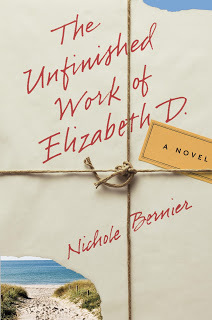
Give us a short,
meaty description of your novel.
It's about a woman who inherited the journals of
a friend who died, and realizes she didn't know her friend as well as she
thought, including where she was really going when she died. Set in the anxious
summer after the September 11th attacks, this story of two women —their
friendship, their marriages, private ambitions and fears — considers the
aspects of ourselves we show and those we conceal, and the repercussions of our
choices.
Your novel is set in 2002, and
the main character has a lot of
fears/neuroses about terrorism. Why did you choose to set the novel in this
time?
In 2002 it felt as if anything could happen — reservoirs
poisoned, ebola unleashed, that you could wake up and the sky would be magenta.
I think most people, myself included, felt for a while these things were not
only possible, but likely. Most of us moved on from that paralyzing fear, but
it was fascinating to me to create a character who had been a confident and
rational person, but became obsessed with protecting her family from so many
unknowns, and could not move on.
Your plot
centers on a woman who’s responsible
for deciding what to do with her recently deceased friend’s trunk of journals.
How did this idea of bestowing journals (via a will) come to you?
I’ve always kept a journal, and been fascinated with why,
exactly, people do this crazy thing, put private thoughts to paper. What
happens if you’re hit by a truck tomorrow? Were you really writing for your own
reflection and catharsis, or were you writing for others to see it someday,
your chance to have your final say? For peace of mind, years ago I wrote a note
in my will designating a trustee for my journals, someone who’d be responsible
for having the mother of all bonfires.
The what-ifs that generated the novel spooled out from there. What
if you inherited the journals of a friend without clear direction what to do
with them, and learned you didn’t know your friend nearly as well as you
thought, including where she was really going when she died? How might you feel
about why she didn’t confide in you, and how might that make you realize ways
you were not candid with loved ones, yourself? What might the dynamic be with
the widower who resents not being given his wife’s journals?
It was tremendously satisfying to explore that juxtaposition of
the faces we show the world and those we hold close, our private ambitions and
fears, and what it costs us in the end.
A big part of
your novel concerns Elizabeth and Kate’s status as working mothers struggling
to balance their jobs while raising children. As a mother of five, how do you
manage finding time to write?
Before I started my novel I was a fairly multifaceted person:
running, photography, cooking, skiing, golf. When I became serious about the
novel most of my hobbies went down the tubes, and now I don’t watch a single TV
show. I don’t say that with any particular pride, and in fact it’s a little
embarrassing to be that out of touch with popular culture. But it’s amazing how
being a busy parent has the laser-like ability to triage what’s really
important to you.
I have an unscientific theory that if you are an involved
parent, regardless of how many children you have, you get about three things to
call your own. And the only other things that have remained for me are being
involved in my kids’ schools, and a base level of exercise, which changed from
running (reluctant, frenetic) to yoga (strengthening and calming). More than
anything else, though, it was critical to have a supportive spouse who’d give
me the hours and sometimes days away to really immerse myself in tough sections
of writing and revision.
Your book
deals candidly with marriage as it exists several years after the honeymoon’s
over. One part of the book reads, “It was a gift, solitude. But solitude with
another person that was an art.” Do you think it’s possible to share solitude
with another person?
That’s the million-dollar question for relationships, I think.
If you can be quiet in another person’s company and engaged in your own
engrossing activity, with no discomfort or distraction or envy, it’s priceless.
But it’s hard. There’s a lot of bustle that has to get done in the downtimes,
and even when you go quiet, there are some things that are just difficult to do
in the presence of someone else. I can’t write in a room where the TV is on which
is how my husband likes to work at night, but sometimes I join him to do other
reading and computer work. I think it’s a matter of finding the common ground,
the common setting, choosing where and when you can find that togetherness.
Author bio:
[image error]
Nichole Bernier is author of the novel THE UNFINISHED WORK
OF ELIZABETH D (http://wellesley.indiebound.com/nichole-bernier), and has
written for magazines including Elle, Self, Health, and Men’s Journal. A Contributing
Editor for Conde Nast Traveler for 14 years, she was
previously on staff as the magazine’s golf and ski editor, columnist, and
television spokesperson. She is a founder of the literary blog Beyond the
Margins (http://www.beyondthemargins.com), and lives outside of Boston with her
husband and five children.
She can be found online at @nicholebernier
(https://twitter.com/#!/NicholeBernier).

Published on June 15, 2012 05:00
June 14, 2012
Happy Flag Day!

In the United States, Flag Day is celebrated on June 14. It commemorates the adoption of the flag of the United States, which happened that day by resolution of the Second Continental Congress in 1777. The United States Army also celebrates the Army Birthday on this date; Congress adopted "the American continental army" after reaching a consensus position in the Committee of the Whole on June 14, 1775.
In 1916, President Woodrow Wilson issued a proclamation that officially established June 14 as Flag Day; in August 1949, National Flag Day was established by an Act of Congress.
Flag Day is not an official federal holiday, though on June 14, 1937, Pennsylvania became the first (and only) U.S. state to celebrate Flag Day as a state holiday, beginning in the town of Rennerdale. Title 36 of the United States Code, Subtitle I, Part A, CHAPTER 1, § 110[4] is the official statute on Flag Day; however, it is at the President's discretion to officially proclaim the observance.
One of the longest-running Flag Day parades is held annually in Quincy, Massachusetts, which began in 1952, celebrating its 59th year in 2010.[5] The 59th Annual Appleton Wisconsin 2009 Flag Day Parade featured the U.S. Navy. The largest Flag Day parade is held annually in Troy, New York, which bases its parade on the Quincy parade and typically draws 50,000 spectators.
The week of June 14 is designated as "National Flag Week." During National Flag Week, the president will issue a proclamation urging U.S. citizens to fly the American flag for the duration of that week. The flag should also be displayed on all government buildings. Some organizations hold parades and events in celebration of America's national flag and everything it represents. Other organizations and tribal groups hold counter-celebrations and protests.[citation needed]
The National Flag Day Foundation holds an annual observance for Flag Day on the second Sunday in June. The program includes a ceremonial raising of the flag, recitation of the Pledge of Allegiance, singing of the national anthem, a parade and more.
The Betsy Ross House has long been the site of Philadelphia's observance of Flag Day.

Published on June 14, 2012 05:00
June 13, 2012
Review: SERPENT'S KISS by Melissa de la Cruz

 3.5 of 5 stars
3.5 of 5 stars Joanna Beauchamp along with her daughters Ingrid and Freya are happily practicing magic once again. The Restriction Against Magic has been lifted after a centuries-long ban, but practicing magic does not solve all the problems they encounter in SERPENT'S KISS. A long-dead spirit from the 1600s is haunting Joanna, desperate for her help to right a terrible wrong. Ingrid is in love for the first time, but her inexperience causes problems with her boyfriend, Matt Noble, and Freya is dealing with the secret that her twin, Freddie, has escaped Limbo and now accuses her love, Killian, of being the one who set him up for a terrible crime in the first place.
I was looking forward to reading this book. I had thoroughly enjoyed the first book in the series, WITCHES OF EAST END and was eagerly awaiting what the tiny town of North Hampton would do with three practicing witches casting spells and mixing potions. While this book was entertaining in spots, I was disappointed with it especially how the author portrayed Ingrid and her actions with her cop boyfriend. Granted, Ingrid is a virgin, but her reactions in some of the romantic scenes was way over the top and unbelievable. I also didn't understand the proposed connection between Joanna and her would-be suitor, Harold Atkins. While Harold did come into play later in the storyline involving Freddie, he did not know that Freddie was back from Limbo when he began calling on Joanna. It seemed like he was thrown in with Joanna as an easy way to create tension between Joanna and her long-lost husband. The addition of the pixies though added quite a comical twist to things.
SERPENT'S KISS is a quick and easy read, but it mostly seems like this book was used as the set-up for the next book in the series, THE WINDS OF SALEM. There are two major cliff-hangers to solve, both of them essential to the well-being of Beauchamp family and I'm looking forward to see what happens next.
This book was provided by Goldberg McDuffie Communications, NYC and Hyperion Books.
Disclosure policy: http://twoendsofthepen.blogspot.com/p/review-policy.html

Published on June 13, 2012 05:00
June 12, 2012
New World of Publishing: SPEED by Dean Wesley Smith
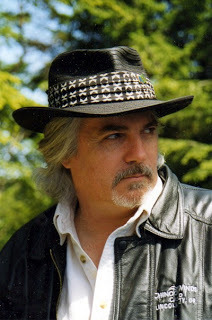
Truth: The slow writers in this new world of publishing are going to have trouble. Far more trouble than they had with traditional publishing only. We are in a new golden age of fiction. The first golden age was the pulp age. Speed of writing was celebrated in that time and it will be this time around as well.
Okay, say it: I have no fear. Or better yet, I’m as dumb as they come for bringing up the subject of speed of writing. Speed of writing is the third rail in publishing, but in the discussion of the new world of publishing, it has to be talked about. So here I go.
Personal Information First
I am not a fast typist, which most people think as fast writing. As many of you have watched in my accounts of writing my challenge stories, I tend to average around one page, 250 words, in about 15 minutes. I tend to write for about an hour before my mind shuts down and I have to walk around and take a break and then come back. I am not yet a touch typist, but slowly my two finger method has worked over to using four fingers. Using all ten fingers to type will never happen in my lifetime.
When I say “fast writer” I don’t mean fast typist. I hope everyone is clear on that. I am a slow typist, yet a fast writer.
Now Some Evil Math
250 words is about one manuscript page if you have your margins correct, and font size large enough for an editor to read, and double-spaced your page. You know, professional manuscript format. (Most of you don’t know that, I have learned, but you assume you do.)
Most people’s e-mails to me, and some of the questions in the comments sections are longer than 250 words. I’ve seen some people do 250 words in tweets in under five minutes.
250 Words = 1 Manuscript Page.
A standard novel for the sake of this discussion is 90,000 words long. So divide 90,000 words by 250 words and you get 360 manuscript pages.
So if a person spent 15 minutes per day and wrote 250 words, that person would finish a novel in one year.
Now, if that person spent 1/2 hour per day on writing and created 500 words per day, they would finish 2 novels per year and be considered prolific by many people.
Write 1,000 words per day, or about an hour, and in 270 days you would have finished three novels. And that means you would only have to do that five days a week to write three novels per year. In other words, it doesn’t take many hours to be considered prolific.
That is why I am considered prolific. I don’t type faster with my little four-finger typing, I just write more hours than most.
(Yeah, yeah, I know, simplistic, but mostly right.)
I am considered a fast writer because I spend more hours writing. Nothing more.
The Myths of Writing Faster
I did an entire chapter and had other areas of discussion about this in Killing the Sacred Cows of Publishing. You can find the speed chapter here. (Be kind when you read it. That chapter was the very first in that series. I was just getting my feet under me.)
But the short version of the myth is that back around 1890s a series of articles started this silly myth by claiming that the slow “literary” writers could only be read by the rich and the fast pulp writers were for the great unwashed. (Remember at that time class systems in both Great Britain and the States was very distinct and clear.) The literary writers were published in expensive hardbacks, the fast pulp writers were published in ten cent magazines.
If a book was thick and hard to read, it was literature. Easy, fun, and a great story and it was pulp. A pure class division to make the rich feel better about themselves.
Then because professors didn’t want to grade more papers than necessary, and always considered themselves part of the elite, the university systems picked up on the slow is better, and then some genres of publishing picked it up because they became too small and it was a good way to slow down publishing of some authors.
So the myth became solid by the middle of the last century that writing slow equals writing well and writing quickly equals writing poorly. (Forget how any thought to how the human brain works in creative mode. We won’t go there.) The writers who could spend more than fifteen minutes per day were punished for their drive and work ethic. And writers who were fast (meaning worked more hours) began hiding the fact and not talking about it in public and writing under many pen names we still see on the stands today. You know pen names like Max Brand, Kenneth Robinson, Elizabeth Peters, Barbara Michaels, and so many others. (No, not telling you my pen names, so don’t ask.)
Speed: In Traditional Publishing
Okay, let me first try to break this down into categories of fiction writers by speed and income.
One book every few years.
The only way these writers made a living at their fiction writing was write bestsellers. Most fiction writers at that speed teach full time or work other jobs. Writing is often a hobby. (Nothing wrong at all with that, but for this discussion, I’m talking about making a living with your fiction.)
If a new writer only wrote one book every two years, they had little if any chance of breaking in under the most recent traditional publishing. I’m sure it happened, but I sure wouldn’t want to bet on those odds. Far too many things go wrong in traditional publishing for me to ever put all my hopes and dreams on one book.
One book a year.
These writers, mostly in small genres such as science fiction or horror or literature couldn’t make a living either. The small genres just didn’t pay enough. So again, the only way writers doing only one book a year could make a living in traditional publishing was have some decent bestsellers. Again, not something I would want to depend on to make my house payment.
Two books per year writers.
Now we are getting into a level that English professors think is too fast, and for some smaller genres such as science fiction, it is. But the writer, considered prolific in some circles, has a much better chance of making a living. At two books per year, a writer could make a decent living on $30,000 plus advances, which were not uncommon up until the last few years. Add in the extra overseas sales and movie options and two books per year could make a writer a decent living, and still can, if nothing goes seriously south. In fact, many, many midlist writers work at this pace and do just fine.
Four books per year writers.
For the most part, writers in this category of three or four books per year write a number of series, usually in different genres. Advances can safely range more, from $15,000 to $25,000 per book and still make the author a nice living. (Remember, for those of you with twisting stomachs at that pace because the myth is in deep, that’s about one hour per day average of writing to make upwards of a hundred grand per year. Even if you are a major rewriter, you can write one hour and rewrite seven hours and still hit that pace. Yeah, yeah, I know, I’m degrading art here. So yell at me later.)
Five books per year and up.
Those of us who manage to spend enough hours (1.25 hours per day average and up) actually typing original fiction have a freedom not found in most writer’s careers. We can take jobs for small amounts, turn down offers, and turn down contracts. We can take advances ranging from $10,000 and up depending on the project and still make six figures every year without too much problem. And that pace allows for books and entire series to go very, very ugly and not force the writer back to a day job.
So, in summary in traditional publishing, it was possible to make a nice living from two books per year and up. But those of us who wrote more than “normal” always hid our speed, usually hidden behind many pen names. And we never talked about it at all in public. That was traditional publishing from the mid-1950s until now.
And remember, in traditional publishing, two books a year is considered prolific and you will have that word added to your name as a new first name if you write two books per year regularly.
NEW WORLD OF PUBLISHING: Speed
Now, in electronic publishing, is when things get ugly for the slow writer. Especially the slow writer trying to break into this business now, in 2011.
Same exact factors apply in traditional publishing and electronic publishing. Exactly. Only things are much, much tighter and hard to get into traditional publishing now as traditional publishers go through all this flux and upheaval.
For a writer to make any kind of decent money at indie-publishing, the author either has to have a lot of products selling at low levels, but regularly, or the author needs to hit it big like Amanda Hocking. And even she has more than one book.
So an author writing only one book every few years would be much better served to never think of indie publishing. The chances of a bestseller are much higher in traditional publishing where there is professional help on everything from editing to packaging to covers to distribution.
But that said, it’s very, very difficult these days for a book to get through the traditional systems, especially if the writer believes in the agent system. So the chance of getting a single book through the system and sold and then made into a bestseller are between slim and a few factors less than slim.
Indie Publishing Facts
It would be rare, if not almost zero chance for a one-book-every-few years-author to make a living at indie publishing. Sure, you have to sell a lot fewer books in indie publishing to make nice money, but that’s still a lot of books for years every month with no support from other products. Not likely to happen would be a generous assessment.
An author with patience and the speed of two books per year can, over time, build up enough inventory to have enough of the reader feedback loops to make enough money indie-publishing. But that’s going to take five plus years at least to reach that ten book list. And even then the sales have to be pretty solid per book.
An author publishing four books per year can get ten books up within 2.5 years and more than likely at that pace, after twenty books or so in five years, be making a pretty fine living from just indie-publishing, even with lower per-book sales.
Those of us who write more than that, and who can also do short stories and collections, don’t even have to have many per-book sales to have it add up to large amounts of money.
More Math
Here is some simple math. I’m going to use round numbers. (Forgive me.)
— Goal: Make $80,000 per year indie-publishing.
— Sales Assumption: Book sells 3 copies per day total across all sites at $4.99 earning the author $3.33 per sale or about $10.00 per day or $3,650.00 per year per book. (If you use $2.99 price, double the numbers of sales. If you use 99 cents per novel sales price, just go read something else because it will never work long term for you.)
So, with my assumption, the magic number is 21 books needed to make close to $80,000 per year on that level of per-book sales.
One Book Per Year: 21 years of writing one book per year until author is making $80,000 per year. (Again, all kinds of assumptions of similar sales and who knows what’s going to be happening in publishing in 21 years. Not a plan I would start on in these turbulent times.)
(Author would need to sell 65 copies per day on the one book to make $80,000 in one year off of one book. Very possible, but not likely. That’s more of a produce-type sales level.)
Two Books Per Year: 10.5 years of writing two books per year until author is making close to $80,000 per year.
(Author would need to sell 33 copies per day on each book to make close to $80,000 in one year off of just two books. Very possible, but again not likely.)
Four Books Per Year: 5.25 years of writing four books per year until author is making close to $80,000 per year.
(Author would need to sell 17 copies per day on each book of four books (across all sites combined, remember) to make $80,000 in one year off of four books. Very possible, and coming a little closer to us normal folks.)
New Writers
For a new writer, without backlist, the writer has to build the publishing list, build the magic bakery inventory. And unless you write one major catchy book and hit a bestseller level of sales, a new writer will take years to get to the goal of having enough inventory to actually make that goal of $80,000 per year. But it took years to make that level in traditional publishing as well.
That’s why the focus has to be on writing new work all the time. Stories will find their readers, but your readers can’t find more of your work unless you write it.
And sure, you can promote the hell out of your first book, but then when someone likes it, what else of yours are they going to buy? Write the next book.
(Also, if you write the next book and focus on becoming a better writer, you might gain readers as well. Again, outside of this topic.)
Summary
In the first golden age of fiction, fast writers made a fortune. When you could buy a car for $300 and a house for $2,000, the pulp writers at a penny per word were making $10.00 per hour. Of course they learned to be fast, and many, many of them we are still reading today.
In the traditional publishing world that grew from 1958 until 2008, critics didn’t like fast writers because of the myths, but fans loved them. So many of our top sellers are fast writers, meaning they work a lot of hours. And many have settled into a book a year because they became bestsellers and were forced to slow down. But Nora Roberts, James Patterson, Stephen King, and many others just kept writing at their own natural speeds.
And in those years, those of us who liked to write and thus just wrote more hours and thus wrote more words and books, hid what we were doing for the most part. (I still do, actually.) Many, many major pen names that you would recognize are the prolific writers working behind the scenes. My best year was eleven novels at traditional lengths of 90,000 words. I hope to break that at some point in the near future.
Now we are in the new world. Those of us who love to just write, who love to tell stories, now can indie publish the stories or books and find them homes and readers, and we don’t have to slow down because of some slow schedule placed on us by a traditional publisher.
We can write and publish as fast as we want. The rules of speed have vanished. If you only write one book every few years, keep your focus solidly on traditional publishing. But if you love to write, love to finish stories, and love to have readers get to your stories quickly after you finish them, indie publishing is for you. There is no need for those of us who love to write and love to finish a lot of products to even think of slowing down ever again.
Sure, I’ll still sell books to traditional publishers. I won’t need to sell everything in indie publishing. Why? When you consider how many hours I spend at computers writing, a couple books to traditional publishing a year is just advertising that I am getting paid to write. Everyone get that? Those books sold to traditional publishers are just advertising for my indie books and stories.
Writers are free once again. We are free to write at our own pace, write for as many hours as we want to write, and publish what we want. Only each writer now sets their own limits.
This is fantastic for writers. And even more fantastic for readers.
This really is the dawn of a second golden age of fiction.
http://www.deanwesleysmith.com/?p=3204

Published on June 12, 2012 05:00
June 11, 2012
Review: FEAR OF FLYING by Shamara Tourmaline
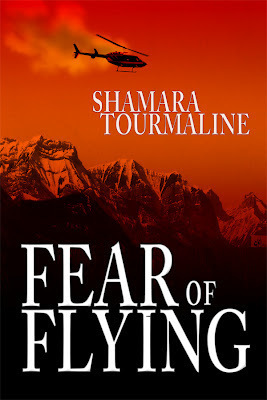
 4 of 5 stars
4 of 5 starsHow far would you run to escape your past? For Serena Kowlachuk, it is to the remote mountains of Alberta, Canada where she hopes her simple life along with her faithful hound, Ranger, and four horses can banish her nightmares forever.
Life has a funny way of upsetting even the best laid plans though. When she pulls injured helicopter pilot, Connor Branson, from a fiery crash near her home, she has no idea she has unwittingly alerted her past enemies to her presence. Time is running out. Can she keep Connor safe while she tries to eliminate her enemies once and for all?
FEAR OF FLYING is engaging from the opening pages where we are privy to Serena's inner thoughts. I immediately wanted to know more about her and her past life. What had happened that made her shut down her emotions completely? What was she running from? The author does a great job of slowly revealing Serena's back story while keeping the reader fully engaged with what's happening between her and Connor. Even injured, Connor exudes sex appeal. He is like no one Serena has ever known and she struggles against any interactions beyond nursing him back to health. The sexual tension between Serena and Connor is palpable - a living, breathing thing of its own. Throw in some bad guys out for revenge and you've got a thoroughly enjoyable romantic suspense story. Recommended.
I purchased this book at Amazon.

Published on June 11, 2012 05:00
June 9, 2012
New #ROMANCE release: GLAMOUR GIRL by Sandra Edwards
Here's another new release from award-winning author, Sandra Edwards. Happy Reading!
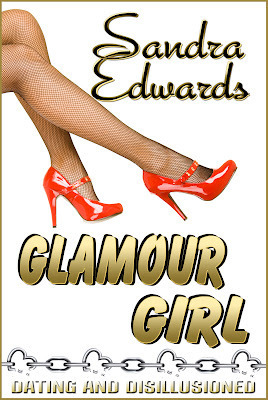
Book blurb:
Rosanna Carmichael’s career is one of glitz and glamour. She’s a photographer to the stars and the privileged. It’s her personal life that’s the problem. She just can’t seem to land a decent date. After getting fed up and swearing off new dates, she agrees to do a photo shoot for the wealthy recluse Gavin Elliot—a man who’s openly gay—where she thinks she'll be safe from further disappointing entanglements. As it turns out, that couldn't be further from the truth.
Glamour Girl is the second installment of the West Coast Girlz trilogy. California Girl and Glamour Girl can be read out of order, but for full enjoyment potential, Party Girl should be read last.
**Glamour Girl is a short novella of about 10,000 words (around 40 pages).
Amazon buy link:
http://www.amazon.com/dp/B0088RM604



Book blurb:
Rosanna Carmichael’s career is one of glitz and glamour. She’s a photographer to the stars and the privileged. It’s her personal life that’s the problem. She just can’t seem to land a decent date. After getting fed up and swearing off new dates, she agrees to do a photo shoot for the wealthy recluse Gavin Elliot—a man who’s openly gay—where she thinks she'll be safe from further disappointing entanglements. As it turns out, that couldn't be further from the truth.
Glamour Girl is the second installment of the West Coast Girlz trilogy. California Girl and Glamour Girl can be read out of order, but for full enjoyment potential, Party Girl should be read last.
**Glamour Girl is a short novella of about 10,000 words (around 40 pages).
Amazon buy link:
http://www.amazon.com/dp/B0088RM604

Published on June 09, 2012 04:46
June 8, 2012
Rebecca Writes About: WHAT A DOG!
by Rebecca Forster
www.rebeccaforster.com

Today a lady wrote to tell me she loved my book Hostile Witness*
because I hadn’t killed Max. I've been traveling a lot in the last three weeks
and it took me a minute to figure out who Max was and why it was so important
to her that he was alive. Max, of course, is Josie Bates' dog; Josie is the
heroine of the witness series. I was touched by the reader's concern for the
fictional canine.
As an author and a reader I had to ask myself: Why
is a book that includes animals richer, more entertaining, and more engaging
than one without? The answer was simple: Animals bring out the best and the
worst in a human character. This makes for great drama and provides an
emotional touch point that is critical for an exciting read.

Max-the-Dog (his legal name) was originally created
as a reflection of Josie, his mistress. Both had been abandoned, both had to
fight for their lives, both were protective of others. But Max became so much
more than Josie’s mirror as the series unfolded. Here are four ways Max made a
difference in the witness series:
HE ENHANCED HUMAN CHARACTERIZATION: Those who
attack him were inherently more evil than a bad guy who ignored him. Those who
love Max were more admirable because they cared for and protect him.
HE WAS AN ANIMATED SOUNDING BOARD: Internal
dialogue can be tedious. Allow a character to speculate to an animal and the
rhetorical questions or monologues sound natural.
HIS PRESENCE SET A TONE: A scene tone can be set
by the way a human character speaks to or interacts with an animal counterpart.
A whispered warning creates a much different tone than a screaming command; a
languid pet conjures up different visions than a playful ruffling of fur.
HE HELPED MOVE THE PLOT FORWARD: An animal's needs
can put a human in a place they might not have been in. For instance, in Privileged
Witness, Josie took Max out for his evening constitutional and ran
into her fugitive client who was hiding outside. Without Max, Josie would have
no reason to go outside and never would have discovered her client. An animal’s
heightened senses can also assist a human to warn of danger or alert a human to
a change in their surroundings.
From The Hound of the Baskervilles to Lassie and
Blue Dog, My Friend Flicka and The Black Stallion, The Cheshire Cat and
Puss-in-Boots, animals have frolicked as humans, served to reflect human
frailties and strengths, and just plain worked their way into reader’s hearts
because of who they are.
So, to the kind lady who was concerned about Max,
have no fear. He will never come to a violent end. No matter what happens to
him, his presence or lack thereof, will be a decision motivated by story and
plot and, of course, love, because Max is as real to me as if he sat at my feet
while I wrote my stories.
*Hostile Witness is free for all e-readers and
is also available in print. The picture is of my grand dog Tucker.

Published on June 08, 2012 05:00
June 7, 2012
Interview with Anne Brear
Today I'd like to welcome Anne Brear to Two Ends of the Pen.
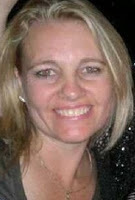
How
are your story ideas born?
My story ideas are born from all sorts
of sources. Usually when I’m doing
something mundane, like ironing or washing
the floor, etc, and ideas will
come into my head then. Sometimes they might come from researching.
I might be flipping through my research books and I’ll
see something
interesting that leads to ideas for a story.
How
many works in progress do you have?
At the moment I’m just starting a new
historical women’s novel set in Victorian Yorkshire again. It’s my favourite
time and place. I feel comfortable writing it.
I recently finished the first
draft of another story.
What
is your writing process?
I simply open a blank page and allow
the story idea to flow. I like to write when it is quiet, the house is peaceful
and everyone is out. Sometimes, I enjoy having some music on in the background.
What
writing mechanic challenges you?
Probably grammar. I suck at it!
What’s
your favorite part of the writing process?
The beginning. I love writing the first
three chapters, weaving everyone in and getting to know them.
What’s
your least favorite part of the writing process?
The least part I like is editing when
the book is finished and I have ideas for a new story that are
begging to get
out. Once a book is written I’m eager to start something new, but I know
editing
is important!
How
long did it take to write your latest release?
My novels, especially my historical
novels usually take about 6 months to write. Sometimes it
depends on what is
happening in my life at the time. I try to make 6 months as my goal. But it
doesn’t always happen.
Do
you have a favorite line or scene from your story?
From The Gentle Wind’s Caress there are
many scenes that really grab me, but I think the ending
is one of the best,
where Isabelle sees that the future could be bright again, just in a different
way
than what she expected.
The Gentle Wind’s Caress
Historical women’s fiction/romance
Book Blurb:
Halifax, 1876. On the death of her
mother and sister, Isabelle Gibson is left to fend for herself and
her brother
in a privately-run workhouse. After the matron's son attempts to rape her,
Isabelle decides
to escape him and a life of drudgery by agreeing to marry a
moorland farmer she has never met. But
this man, Farrell, is a drunkard and a bully
in constant feud with his landlord, Ethan Harrington.
When Farrell bungles a
robbery and deserts her, Isabelle and Ethan are thrown together as she
struggles
to save the farm. Both are married and must hide their growing love.
But despite the secrecy, Isabelle
draws strength from Ethan as faces from the
past return to haunt her and a tragedy is set to strike that
will change all of
their lives forever.
Amazon USA
Amazon UK
http://www.amazon.co.uk/Gentle-Winds-Caress-Anne-Brear/dp/1908483326/ref=ntt_at_ep_dpt_5
Thanks so much for having me!
You're welcome Anne! I
thoroughly enjoyed your latest release, Gentle
Wind's Caress. Readers
can read my review here: http://twoendsofthepen.blogspot.com/2012/05/review-gentle-winds-caress-by-anne.html



How
are your story ideas born?
My story ideas are born from all sorts
of sources. Usually when I’m doing
something mundane, like ironing or washing
the floor, etc, and ideas will
come into my head then. Sometimes they might come from researching.
I might be flipping through my research books and I’ll
see something
interesting that leads to ideas for a story.
How
many works in progress do you have?
At the moment I’m just starting a new
historical women’s novel set in Victorian Yorkshire again. It’s my favourite
time and place. I feel comfortable writing it.
I recently finished the first
draft of another story.
What
is your writing process?
I simply open a blank page and allow
the story idea to flow. I like to write when it is quiet, the house is peaceful
and everyone is out. Sometimes, I enjoy having some music on in the background.
What
writing mechanic challenges you?
Probably grammar. I suck at it!
What’s
your favorite part of the writing process?
The beginning. I love writing the first
three chapters, weaving everyone in and getting to know them.
What’s
your least favorite part of the writing process?
The least part I like is editing when
the book is finished and I have ideas for a new story that are
begging to get
out. Once a book is written I’m eager to start something new, but I know
editing
is important!
How
long did it take to write your latest release?
My novels, especially my historical
novels usually take about 6 months to write. Sometimes it
depends on what is
happening in my life at the time. I try to make 6 months as my goal. But it
doesn’t always happen.
Do
you have a favorite line or scene from your story?
From The Gentle Wind’s Caress there are
many scenes that really grab me, but I think the ending
is one of the best,
where Isabelle sees that the future could be bright again, just in a different
way
than what she expected.
The Gentle Wind’s Caress
Historical women’s fiction/romance
Book Blurb:
Halifax, 1876. On the death of her
mother and sister, Isabelle Gibson is left to fend for herself and
her brother
in a privately-run workhouse. After the matron's son attempts to rape her,
Isabelle decides
to escape him and a life of drudgery by agreeing to marry a
moorland farmer she has never met. But
this man, Farrell, is a drunkard and a bully
in constant feud with his landlord, Ethan Harrington.
When Farrell bungles a
robbery and deserts her, Isabelle and Ethan are thrown together as she
struggles
to save the farm. Both are married and must hide their growing love.
But despite the secrecy, Isabelle
draws strength from Ethan as faces from the
past return to haunt her and a tragedy is set to strike that
will change all of
their lives forever.
Amazon USA
Amazon UK
http://www.amazon.co.uk/Gentle-Winds-Caress-Anne-Brear/dp/1908483326/ref=ntt_at_ep_dpt_5
Thanks so much for having me!
You're welcome Anne! I
thoroughly enjoyed your latest release, Gentle
Wind's Caress. Readers
can read my review here: http://twoendsofthepen.blogspot.com/2012/05/review-gentle-winds-caress-by-anne.html

Published on June 07, 2012 05:00
June 6, 2012
New #Romantic Suspense: FEAR OF FLYING by Shamara Tourmaline
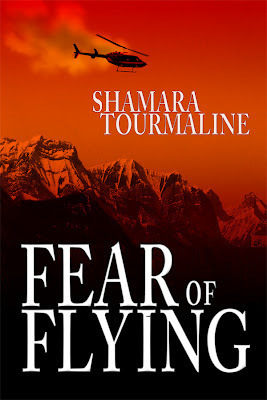
Book blurb:
After a traumatic experience, Serena Kowlachuk comes to Alberta for a new beginning. She finds a quiet, uncomplicated life—completely opposite from her explosive, tragic past—alone with her animals and an occasional visit from the old bush pilot who delivers the mail. She's not looking for relationships.
Especially not with helicopter pilots.
When Connor Branson is shot out of the sky near Serena's remote wilderness home, she can’t ignore two hundred pounds of hot, dark and handsome—a hunk who needs her help if he’s going to live.
Connor appreciates more about Serena than the simple fact she saved his life, but she can’t believe she isn't cursed in matters of the heart—especially when the deadly forces of the life she left behind catch up with them both.
Amazon link:
http://www.amazon.com/Fear-of-Flying-ebook/dp/B0086OQ8OE
BN:
http://www.barnesandnoble.com/w/fear-of-flying-shamara-tourmaline/1111243294

Published on June 06, 2012 05:00



